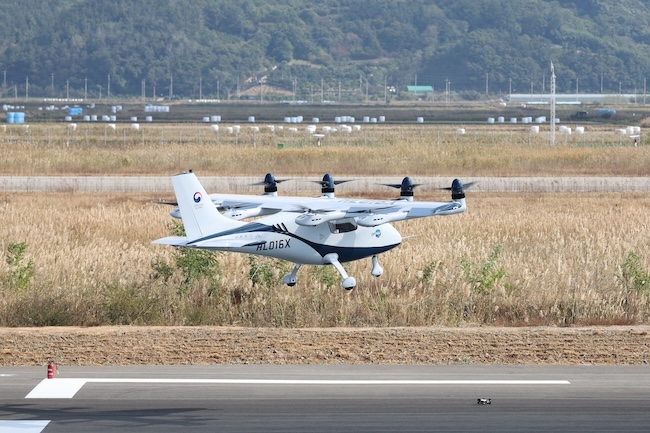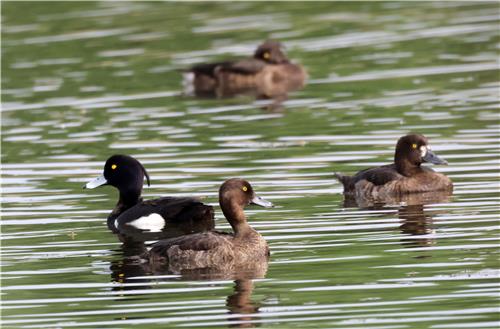
The government’s UAM pilot projects in South Korea intersect with essential habitats for migratory birds, sparking debates on the environmental and safety implications. (Image courtesy of Yonhap)
SEOUL, Jan. 29 (Korea Bizwire) – The advent of “drone taxis” and similar Urban Air Mobility (UAM) solutions brings a futuristic vision of transportation closer to reality. However, these high-tech conveyances must navigate a critical challenge: avoiding collisions with birds, a concern especially vital for passenger safety.
This issue has come to the forefront as the government’s UAM pilot projects in South Korea intersect with essential habitats for migratory birds, sparking debates on the environmental and safety implications.
The South Korean government, through the Ministry of Land, Infrastructure and Transport in collaboration with the Ministry of Environment, is spearheading a UAM initiative aimed at commercialization by late 2025.
This initiative began with safety testing of drone technologies in Goheung County, Jeollanam-do, and is expanding into a second phase to assess urban applicability in the Seoul metropolitan area starting this August.
The second phase involves testing routes that span significant stretches along waterways, including a 14-kilometer section from the drone testing center to the Gyeyang New Town along the Ara Waterway, a 32-kilometer stretch connecting Goyang KINTEX to Gimpo Airport and Yeouido along the Han River, and an 8-kilometer segment linking Jamsil to Suseo along the Tancheon Stream.
These areas, crucial for migratory birds, have raised concerns about potential bird strikes, as they have not undergone environmental impact assessments due to their small scale.
The routes for the second phase of the UAM project intersect with major bird migration sites, four of which have been identified in the Ministry of Environment’s annual “Winter Bird Census” conducted from October to March. These include the Cheongna and Gulpocheon estuaries, parts of the Han River, and the Tancheon Stream.
Recent censuses have recorded significant bird populations in these areas, including thousands of bean geese and greater white-fronted geese, highlighting the potential for conflict between UAM operations and bird migration paths.
Bird strikes pose a considerable risk not only to the ecosystem but also to passenger safety and could lead to significant economic losses due to emergency diversions. With over 500 bird strike incidents reported at domestic airports from 2019 to August of last year, the issue is pressing.
Although drones, unlike manned aircraft, can hover and might thus present a lower risk, the fact that most bird strikes occur at altitudes below 600 meters — within drone operational heights — suggests a potential collision risk.
The Ministry of Land, Infrastructure and Transport has addressed these concerns, noting that the test and commercial UAM routes do not currently overlap and that environmental impact assessments will be considered in the finalization of commercial routes and the construction of vertiports.
Officials believe that while the exact locations for UAM operations have yet to be determined, urban centers in the Seoul metropolitan area are under consideration, where bird migration issues are presumed to be less severe.
However, experts caution against underestimating the risk of bird strikes in urban areas. Lee Who-seung from the Korea Environment Institute emphasizes the need for thorough risk assessments and preventive measures to ensure passenger safety, even in densely populated regions.
This approach calls for a delicate balance between embracing cutting-edge urban air mobility solutions and safeguarding the natural migratory patterns of birds, ensuring the skies remain safe for all.
Lina Jang (linajang@koreabizwire.com)







